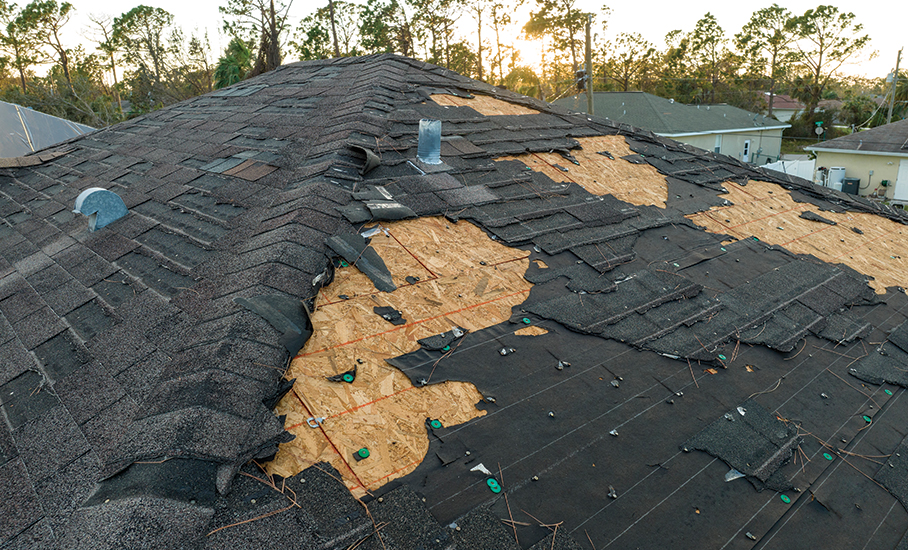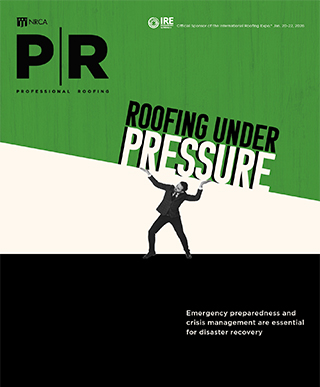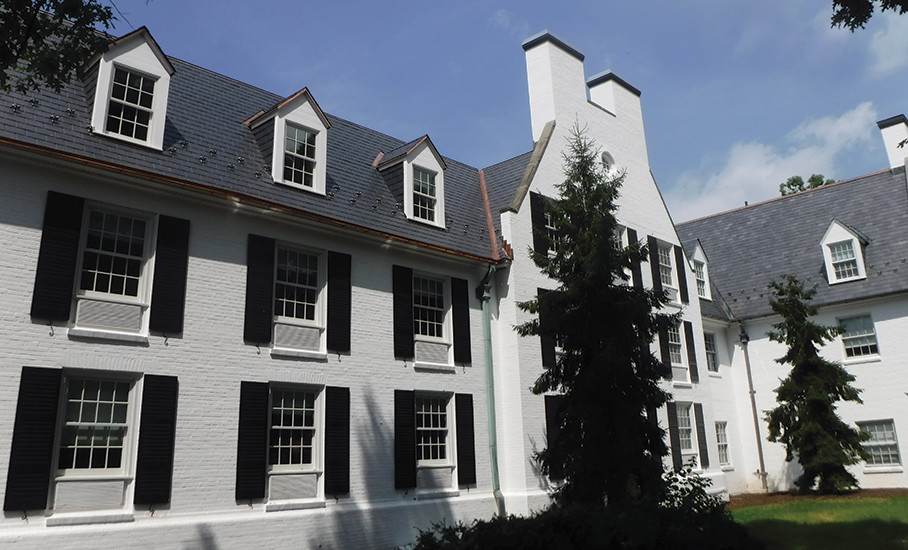
Editor’s note: This article is for general educational purposes only and does not constitute legal advice.
As a roofing contractor, your clients look to you for guidance when choosing roof systems that offer long-term value, durability and protection. But their decisions can be complicated by manufacturers offering warranties as key selling points. However, warranties are often misunderstood.
The importance of warranties
Purchasing a new roof system is a significant investment. Although property owners often focus on selecting the best materials for their structures, ensuring adequate warranty protection is equally important. Roof system warranties can be complex, so it is essential you and your customers understand coverage options to make informed decisions about materials and installation.
There are three main types of roof system warranties:
- Standard manufacturer’s warranty. This covers the products purchased, typically limited to material defects.
- Workmanship warranty. This is provided by the contractor and covers installation errors.
- Extended manufacturer’s warranty. This expands coverage to include contractor workmanship and additional product protections when installed by certified professionals.
The reality of warranties
A common misconception among consumers is a long-term roof system warranty guarantees a leak-free roof or is a substitute for quality workmanship. As a contractor, you should emphasize to clients a warranty’s duration is not the most critical factor when selecting a roof system. Instead, the focus should be on the product’s performance, quality and suitability for the specific project.
For instance, a long-term warranty may offer little value if a roof system fails prematurely. Conversely, a well-designed, properly installed roof system might not require a warranty at all. This factor underscores the importance of proper roof system design, construction and maintenance.
Warranty basics
Manufacturers often use long-term warranties as marketing tools. However, these warranties sometimes are established without adequate technical research or documentation of a product’s real-world performance. In some cases, the financial strain of honoring these long-term warranties has even led to the closure of manufacturers, leaving clients with ineffective warranties and unresolved roofing problems.
You should educate customers about the risks of relying solely on warranties from manufacturers that may not have the financial stability to honor their commitments over the long term.
Standard manufacturer’s warranty
Most shingles carry a basic limited warranty, which typically covers defective materials but excludes installation errors or other components, such as flashing or underlayment. Key points include:
- An initial coverage period that allows for full replacement of defective materials, often including labor, but for a limited time
- After the initial period, warranties often become prorated, providing only partial coverage for material costs
- Damage caused by improper installation, environmental factors or lack of maintenance are not covered
Contractor workmanship warranty
A contractor’s workmanship warranty is essential for addressing issues caused by installation errors. Features to consider include:
- Coverage period, which can range from one year to lifetime coverage, though the terms vary widely
- Scope of coverage, which typically includes labor and materials for repairs related to workmanship errors. Some warranties also cover interior damage from leaks caused by poor installation.
- Exclusions that include storm damage, alterations post-installation and foot traffic
When selecting a contractor, customers should prioritize experience, reliability and quality over warranty length.
Extended manufacturer’s warranty
Extended warranties provide comprehensive coverage for roof systems installed by certified contractors. These warranties often require the installation of a complete roof system, including components such as:
- Ice and water barriers
- Underlayment
- Hip and ridge cap shingles
- Soffit and ridge vents
- Starter and field shingles
Benefits include:
- Nonprorated coverage that offers continuous coverage for defective materials, including labor costs for repairs
- Workmanship coverage that offers protection against installation errors, including tear-off and disposal costs, with terms extending up to 50 years in some cases
Extended manufacturer warranties often require registration within a specific timeframe. If you are handling the installation, ensure the warranty is registered promptly to avoid complications in the event of a claim.
Roof system warranties can offer peace of mind, but they are no substitute for quality materials, proper installation and regular maintenance
Exclusions and limitations
Although warranties often cover materials and workmanship, many items are not covered. Typical exclusions include the following:
- Animal damage. If animals such as squirrels, insects and raccoons chew through shingles, a warranty likely will not cover the damage. Therefore, it is important to inspect and maintain roofs and watch for destructive pests that create holes and make their homes in attics.
- Extreme weather and acts of God. Various types of weather can wreak havoc on roofs. Examples include hurricanes, tornadoes, other high winds, blizzards and severe thunderstorms. Even the best roofing materials cannot withstand the worst weather. After a weather event, it is critical to inspect roofs for damage and make immediate repairs. However, this is an issue for an insurance policy not a warranty.
- Impact of other trades. When other work is being done on a structure, the roof often can be used as a staging platform, and that can lead to damage. For example, if other tradespeople are installing solar panels, HVAC systems or satellite dishes, their equipment can harm shingles. Therefore, it is crucial to inspect a roof after such work is completed and bring any damage to the attention of those companies. A customer cannot rely on a warranty to cover such issues.
- Removal of overburden features. Roofs may have overburden additions or designs, such as gardens, patios or skylights. If these items are removed, the extra foot traffic can damage a roof. In addition, if the removal is delayed, additional damage can occur. A warranty does not cover such harm.
- Consequential or incidental damage. It is essential to understand that when any damage occurs within a structure, it is not covered by a roof warranty. For example, if a roof leak destroys an expensive antique desk on the floor beneath it, that damage is considered consequential and not included in the warranty. The same is true for water damage throughout the structure. In such cases, it is best to check the insurance policy.
- Reporting delays. If an owner notices an issue with the roof, it is essential he or she reports the problem right away. Repair costs may not be covered if they are reported after a warranty’s timeframe has expired.
Roof system warranties often include restrictive provisions that limit the warrantor’s liability. These restrictions might:
- Impose monetary caps on repairs
- Prohibit assignment or transfer of the warranty to another party
- Require regular maintenance or inspections with failure to comply voiding the warranty
You should carefully review warranty documentation with your clients and explain any clauses that could affect their rights and obligations.
The importance of maintenance
One of the most overlooked aspects of roof system warranties is the requirement for regular maintenance. Warranties often are contingent on the owner’s ability to provide periodic upkeep, which may include inspections, cleaning and minor repairs. Failure to conduct regular maintenance can void the warranty, leaving customers unprotected.
Encourage your customers to:
- Schedule routine inspections, particularly after severe weather events
- Keep detailed records of roof system maintenance activities and repairs
- Address minor issues promptly to prevent more significant problems
You might even consider offering maintenance plans to your clients, ensuring compliance with warranty terms and extending the service life of their roof systems.
Proactive vs. reactive solutions

Although warranties are inherently reactive—addressing issues after they occur—you should focus on proactive measures. A prudent approach includes:
- Recommending roof systems based on proven performance and compatibility with the client’s needs
- Ensuring proper installation and adherence to best practices
- Educating clients about the importance of regular, ongoing maintenance
By prioritizing these factors, contractors can help clients achieve better long-term outcomes, reducing the reliance on warranties.
Guidelines to follow
To best serve your customers, consider the following guidelines:
- Educate customers about warranty realities: Explain warranties are not insurance policies and are limited to specific scenarios. Help clients understand the importance of selecting a roof system based on quality not just warranty length.
- Evaluate manufacturer stability: Recommend products from manufacturers with a solid track record and the financial stability to honor warranties for the full term.
- Understand warranty requirements: Familiarize yourself with the maintenance and inspection requirements outlined in warranties and communicate these to your clients.
- Focus on proven products: Recommend roof systems that have a history of reliable performance rather than unproven systems with lengthy warranties.
- Offer maintenance services: Provide ongoing maintenance and inspection services to ensure compliance with warranty terms and extend the roof’s service life.
- Document everything: Maintain detailed records of the installation process, materials used and maintenance activities. These records can be invaluable for a successful warranty claim.
Educate clients
Roof system warranties can offer peace of mind, but they are no substitute for quality materials, proper installation and regular maintenance. As a roofing contractor, your role is to guide customers toward informed decisions that prioritize performance and reliability over marketing claims.
By focusing on proactive solutions and educating clients about the realities of roof system warranties, you can help building owners achieve durable, cost-effective roofing solutions that stand the test of time.

TRENT COTNEY
Partner and practice group leader
Adams and Reese LLP, Tampa, Fla.,



